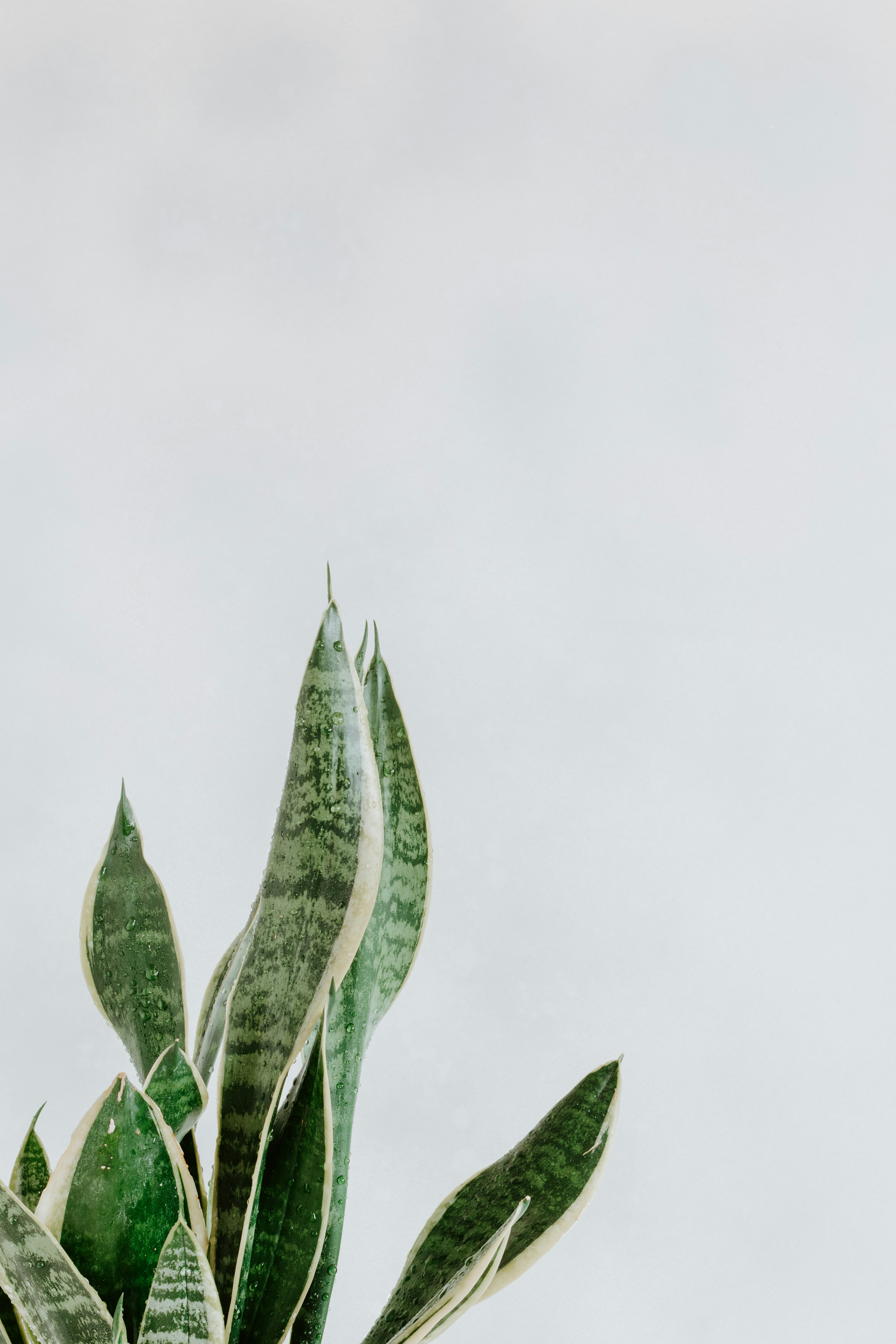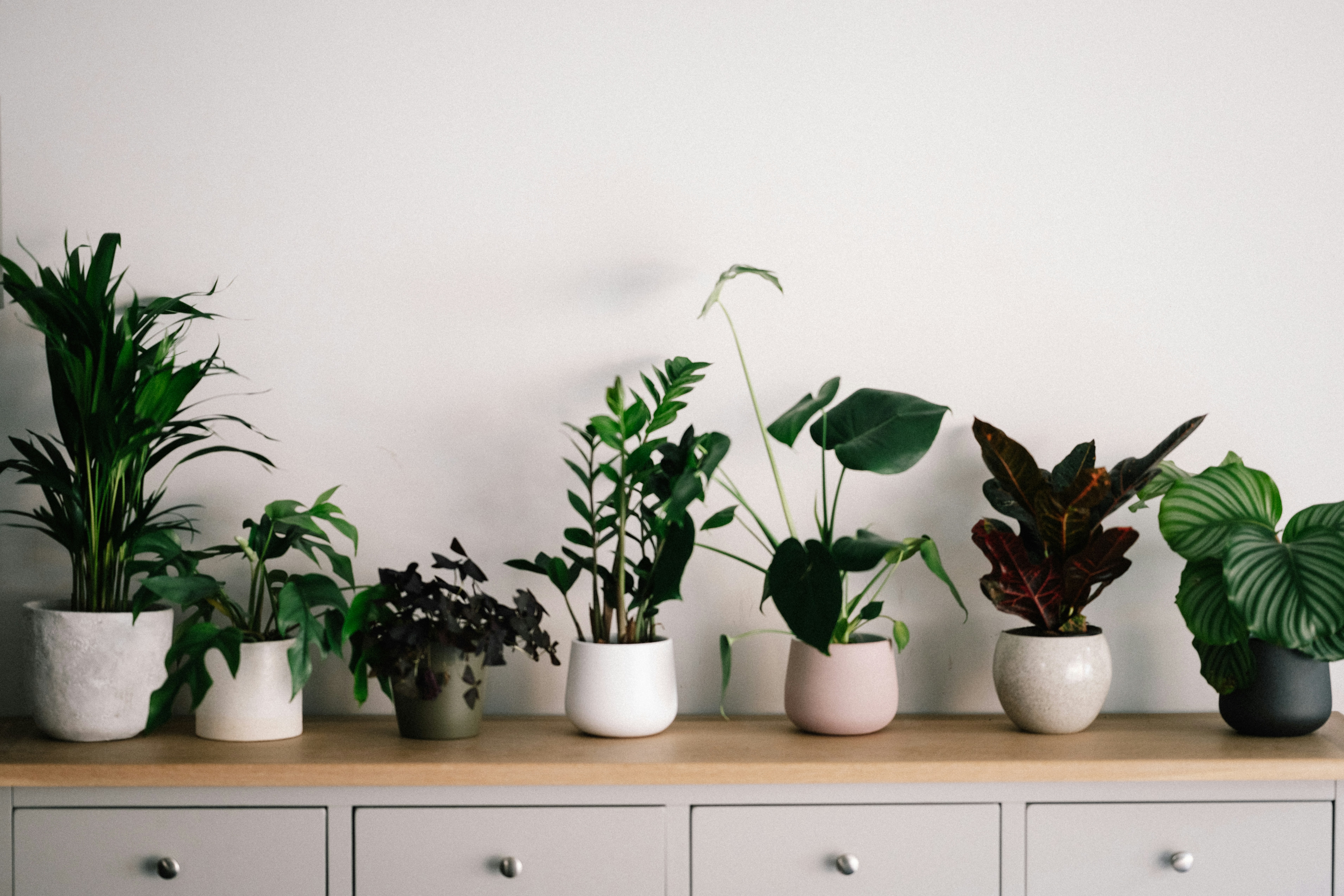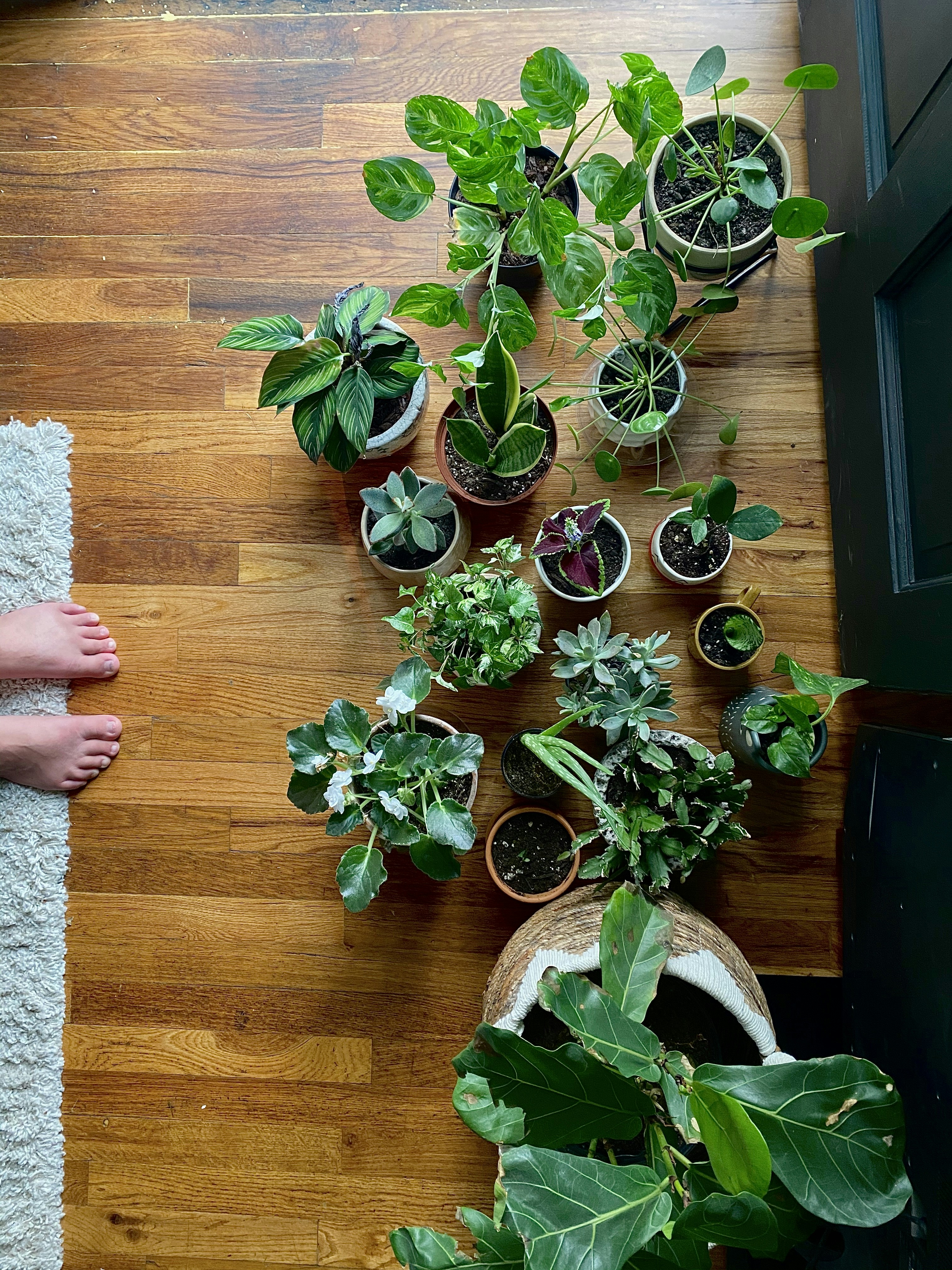Taking care of indoor houseplants can be a rewarding and fulfilling experience, but it can also be a little intimidating if you’re not sure where to start. Whether you’re a seasoned plant enthusiast or a beginner looking to bring some greenery into your home, this article will guide you through the basics of caring for your indoor houseplants. From choosing the right plants for your space to providing them with the proper amount of water, light, and nutrients, you’ll learn all the essential tips and tricks to help your indoor plants thrive and brighten up your living space. So, let’s get started and unlock the secrets to successful indoor plant care!
Choosing the Right Indoor Houseplants
Consider the Lighting Conditions
When choosing indoor houseplants, it is essential to consider the lighting conditions in your home. Different plants have varying light requirements, and understanding these requirements will help you select the right plants for your space. Assess the amount of natural light each room receives throughout the day, taking note of the direction the windows face. Some plants thrive in bright, direct sunlight, while others prefer indirect or low light conditions.
Select Plants Based on Size and Space
Another crucial factor to consider when choosing indoor houseplants is the available space in your home. Some plants can grow quite large, while others remain small and compact. It is important to choose plants that will fit well in your space and won’t outgrow their environment. Consider the height and spread of the plant at maturity, as well as the space needed for proper air circulation. If you have limited space, you may want to opt for smaller, more manageable plants or plants that can be placed on shelves or tables.
Check for Plant Toxicity
If you have children or pets at home, it is crucial to check for plant toxicity before bringing any indoor houseplants into your space. Some common houseplants can be toxic if ingested, and it is important to ensure the safety of your loved ones. Make a list of plants you are considering and research whether they are safe around pets and children. If you find a plant on your list that is toxic, consider choosing a non-toxic alternative that will still provide the aesthetic and health benefits of indoor greenery.
Providing Proper Watering
Determine Watering Needs
Watering is a fundamental aspect of indoor plant care, and understanding the watering needs of your plants is crucial for their health and wellbeing. Different plants have different water requirements, and it is essential to determine how often and how much water each plant needs. Factors such as plant species, pot size, and environmental conditions all play a role in watering needs. Some plants prefer consistently moist soil, while others prefer to dry out partially between waterings. Research the specific watering requirements of your chosen plants to ensure you are providing them with the appropriate amount of water.
Use the Right Watering Technique
In addition to determining the frequency and amount of water, it is crucial to use the correct watering technique for your indoor houseplants. One common mistake is to water plants from above, allowing water to accumulate on their leaves. This can lead to various issues, including fungal diseases and rot. Instead, water plants at their base, allowing the water to soak into the soil and reach the roots. This ensures that the water is reaching the areas where it is needed the most.
Avoid Overwatering
Overwatering is one of the most common mistakes made in indoor plant care. While it may be tempting to keep your plants constantly moist, this can lead to problems such as root rot and fungal diseases. To avoid overwatering, always check the moisture level of the soil before watering. Stick your finger about an inch into the soil, and if it feels dry, it’s time to water. Ensure that the pots have proper drainage to allow excess water to escape and avoid leaving standing water in saucers.
Prevent Underwatering
On the other hand, underwatering can also be detrimental to indoor houseplants. When plants do not receive enough water, they may become dehydrated and wilt. To prevent underwatering, regularly check the soil moisture and water when needed. Some plants may require more frequent watering during hot summer months, while others may need less water during the dormant season. It is essential to monitor the condition of your plants and adjust your watering routine accordingly.
Maintaining Optimal Humidity
Understanding Ideal Humidity Levels
Humidity levels play a vital role in the health and growth of indoor houseplants. While some plants thrive in high humidity environments, others prefer drier conditions. Understanding the ideal humidity levels for your plants will help you create a suitable environment for their growth. Most indoor plants prefer humidity levels between 40% and 60%. However, some plants, such as tropical varieties, may require higher humidity levels.
Increase Humidity for Dry Environments
If you live in a dry climate or have a home with low humidity levels, there are several ways to increase humidity for your indoor houseplants. One effective method is to use a humidifier, which will release moisture into the air and create a more suitable environment for your plants. Grouping plants together can also help create a microclimate with higher humidity levels. Another option is to place a tray filled with water near your plants, allowing the water to slowly evaporate and increase the humidity.
Decrease Humidity for High Humidity Areas
If you live in a humid climate or have a room with high humidity levels, it is essential to provide proper ventilation and airflow for your indoor houseplants. Excess humidity can encourage mold growth and fungal diseases. Ensure that the room is adequately ventilated, and avoid overwatering your plants. You can also use a dehumidifier to reduce the moisture in the air. Additionally, avoid placing plants in areas with direct contact with air conditioning vents or drafty windows, as this can cause temperature and humidity fluctuations.
Temperature and Air Circulation
Know the Preferred Temperature Range
Different indoor houseplants have varying temperature preferences, and understanding the preferred temperature range for your plants is essential for their overall health. Most indoor plants thrive in temperatures between 60°F and 75°F (15°C and 24°C). However, some plants, such as tropical varieties, may require slightly higher temperatures. It is important to research the specific temperature requirements of your chosen plants and maintain a suitable range for their optimal growth.
Avoid Extremes in Temperature
While indoor plants have some tolerance for temperature fluctuations, it is important to avoid extremes that can stress or harm the plants. Sudden temperature drops can cause foliage damage, while excessively high temperatures can lead to dehydration and wilting. Avoid placing plants near drafty windows, air conditioning vents, or heating sources that can cause drastic temperature changes. Additionally, be cautious when placing plants near exterior doors or windows during extreme weather conditions.
Provide Adequate Air Circulation
Proper air circulation is important for the overall health of indoor houseplants. It helps prevent the buildup of stagnant air and reduces the risk of pests and diseases. Ensure that your plants have sufficient space between them to allow air to circulate freely. You can also gently move the leaves of your plants occasionally to simulate a breeze and promote air movement. If you have multiple plants in a room, consider using a fan to improve air circulation or open windows periodically to allow fresh air to enter the space.
Choosing the Right Soil
Consider the Plant’s Native Habitat
When selecting soil for your indoor houseplants, it is important to consider the plant’s native habitat. Different plants have different soil requirements, and replicating their natural environment as closely as possible will contribute to their overall health and growth. For example, succulents and cacti require well-draining soil that mimics the arid conditions of their native deserts. Research the specific soil preferences of your chosen plants and choose a soil mixture that matches their needs.
Select Well-Draining Soil Mixtures
In general, most indoor houseplants prefer well-draining soil mixtures that allow excess water to flow freely and prevent waterlogged roots. You can use commercially available potting mixes specifically formulated for indoor plants, as they are typically blended with materials like perlite or vermiculite to improve drainage. Additionally, adding organic matter such as compost can help improve soil structure and promote a healthy root system. Avoid using heavy garden soil or soil that retains too much moisture, as this can lead to root rot and other issues.
Avoid Using Garden Soil for Indoor Plants
It is crucial to avoid using garden soil for indoor houseplants. Garden soil may contain pests, diseases, or weed seeds that can harm your plants. Additionally, garden soil is often too heavy and compact for indoor containers, leading to poor drainage and restricted root growth. If you need to repot your plants or start them from seeds or cuttings, opt for a sterile potting mix designed for indoor use. These mixes provide the necessary nutrients and drainage while minimizing the risk of pests and diseases.
Fertilizing Indoor Houseplants
Understand the Nutrient Requirements
Proper fertilization is essential for the long-term health and vitality of indoor houseplants. Different plants have varying nutrient requirements, and understanding these requirements will help you provide the necessary fertilization. Most indoor plants benefit from a balanced, water-soluble fertilizer formulated specifically for houseplants. However, some plants may have specific requirements for certain nutrients, such as high phosphorus for flowering plants. Research the nutrient requirements of your chosen plants and choose a fertilizer accordingly.
Choose the Right Type of Fertilizer
When selecting a fertilizer for your indoor houseplants, there are different options to consider. Organic fertilizers, such as compost or worm castings, provide slow-release nutrients and improve soil structure over time. Synthetic fertilizers, on the other hand, deliver nutrients more quickly and are often formulated to address specific plant needs. Liquid fertilizers are convenient for regular feeding, while controlled-release fertilizers provide a continuous supply of nutrients over a more extended period. Choose a fertilizer that suits your preferences and the specific needs of your plants.
Follow Proper Application Guidelines
To ensure the effectiveness and safety of fertilizers, it is important to follow the proper application guidelines. Over-fertilization can lead to nutrient imbalances, root burn, or other issues, while under-fertilization may result in stunted growth or nutrient deficiencies. Read the instructions provided with the fertilizer and apply the recommended dosage and frequency. It is generally better to under-fertilize slightly than to over-fertilize, as excess nutrients can accumulate in the soil and cause harm to the plants. Additionally, always water your plants before applying fertilizer to prevent root damage.
Pruning and Trimming
Know When to Prune
Pruning is an essential part of maintaining the health and appearance of indoor houseplants. Regular pruning helps control the size and shape of the plants, promotes bushier growth, and removes dead or diseased parts. It is important to know when to prune each plant as some may require more frequent pruning than others. Generally, pruning should be done during the active growth phase of the plants, which is usually in spring or early summer. However, if you notice any signs of disease, pests, or damage, it is recommended to prune those affected parts as soon as possible.
Trim to Promote Growth and Shape
When trimming indoor houseplants, aim to promote growth and shape the plants according to your preferences. Trim back overgrown or leggy branches to encourage bushier growth and maintain a compact shape. Remove any dead or yellowing leaves to redirect the plant’s energy towards healthier foliage. You can also pinch back the tips of certain plants to encourage branching and create a fuller appearance. It is important to use clean and sharp pruning tools to prevent the spread of diseases, and always disinfect the tools between each plant to ensure cleanliness.
Remove Diseased or Damaged Parts
One crucial aspect of pruning is removing diseased or damaged parts from your indoor houseplants. Infected or damaged leaves, stems, or flowers can harbor pests or infections, spreading them to the rest of the plant. If you notice any signs of disease, such as discoloration, spots, or wilting, promptly remove the affected parts using sterile pruners or scissors. Dispose of the removed plant material away from your other plants to prevent contamination. Regularly inspect your plants for any signs of pests or diseases to catch any issues early and prevent further spread.
Preventing and Treating Pests
Identify Common Indoor Plant Pests
Pests can pose a significant threat to the health and wellbeing of indoor houseplants, and it is important to be able to identify common pests to prevent and treat infestations. Some common indoor plant pests include aphids, spider mites, mealybugs, and fungus gnats. Each pest has its own unique characteristics and signs of infestation. Educate yourself about these pests and regularly inspect your plants for any signs of pests, such as tiny insects, webbing, or leaf damage. Early detection is crucial for successful pest management.
Implement Preventive Measures
Prevention is key when it comes to managing pests in indoor houseplants. Implementing preventive measures can help reduce the risk of infestations and keep your plants healthy. One effective preventive measure is to practice good plant hygiene, regularly removing fallen leaves or debris that can harbor pests or diseases. Quarantine new plants before placing them near existing ones to ensure they are pest-free. Additionally, avoid overwatering or overcrowding your plants, as these conditions can create a favorable environment for pests to thrive. Healthy plants are more resistant to pests, so providing optimal care and conditions is essential.
Use Organic or Chemical Pest Control
If you do encounter pests in your indoor houseplants, there are various methods to control and eliminate infestations. Organic pest control methods, such as neem oil or insecticidal soap, are popular options that are safe for both plants and the environment. These products work by suffocating or repelling pests. In cases of severe infestations, chemical insecticides may be necessary. It is important to choose products specifically labeled for indoor use and follow the instructions carefully to ensure the safety of your plants, yourself, and any household members or pets.
Seek Professional Help if Needed
Sometimes, despite your best efforts, pest infestations can become overwhelming and difficult to manage. If you are unable to successfully control or eliminate pests from your indoor houseplants, it is recommended to seek professional help. A horticulturist, plant specialist, or pest control expert can provide guidance, identify specific pest issues, and recommend appropriate treatments. They can also help you develop an integrated pest management plan tailored to your specific situation, ensuring the long-term health and happiness of your indoor plants.

Managing Indoor Plant Diseases
Recognize Common Plant Diseases
Just like outdoor plants, indoor houseplants are susceptible to various diseases. Recognizing common plant diseases is crucial for early detection and proper treatment. Some common indoor plant diseases include fungal infections, bacterial infections, root rot, and leaf spots. Each disease has its own distinct symptoms, such as wilting, discoloration, or visible signs of fungal growth. Regularly inspect your plants for any signs of disease, and promptly address any issues to prevent further spread and potential damage to your plants.
Practice Proper Sanitation
Proper sanitation plays a vital role in preventing the spread of diseases among indoor houseplants. Always use clean and sterilized tools when pruning or trimming your plants to minimize the risk of cross-contamination. Dispose of any diseased or infected plant material away from healthy plants to prevent the spread of spores or pathogens. After handling infected plants or using potentially contaminated tools, wash your hands thoroughly to avoid transferring diseases to other plants. Regularly clean the surfaces where your plants are placed to remove any fungal spores or bacteria.
Provide Ideal Growing Conditions
Creating and maintaining ideal growing conditions for your indoor houseplants will contribute to their overall disease resistance. Avoid overwatering, as excessive moisture can lead to fungal infections and root rot. Ensure proper air circulation to prevent the buildup of stagnant air, which can contribute to fungal diseases. Keep an eye on the temperature and humidity levels in your space, as extremes can stress your plants and make them more susceptible to diseases. Lastly, maintain a regular schedule of care activities, such as watering, fertilizing, and pruning, to keep plants healthy and minimize their vulnerability to diseases.
Apply Disease-specific Treatments
If you notice signs of disease in your indoor houseplants, it is important to apply appropriate treatments to address the specific issue. For fungal infections, commercially available fungicides can help control the spread of the disease. Bacterial infections may require the removal and destruction of affected parts or the entire plant in severe cases. Root rot can often be managed by adjusting watering practices and improving soil drainage. Some leaf spots can be treated by removing affected leaves and providing proper air circulation and sunlight. Research the specific disease affecting your plants and follow recommended treatment methods accordingly.
Rotating and Repositioning
Rotate Plants for Balanced Growth
Rotating indoor houseplants is a practice that helps promote balanced growth and prevents uneven development. Plants tend to lean and grow toward the light source, which can result in lopsided or leggy growth. By rotating your plants regularly, you ensure that each side receives an equal amount of light and encourage more symmetrical growth. It is recommended to rotate your plants every few weeks, or whenever you notice them leaning noticeably towards one direction. This simple practice will help your plants grow more evenly and maintain a more attractive appearance.
Reposition to Optimize Light Exposure
In addition to rotating, repositioning your indoor houseplants can help optimize their exposure to light. As the seasons change, the angle and intensity of sunlight may vary, affecting the light conditions in different areas of your home. Observe how the light enters your space throughout the day and adjust the position of your plants accordingly. Some plants may benefit from being moved closer to a window during the winter months when the sunlight is less intense. Others may need to be repositioned away from direct sunlight during the hot summer months. Finding the ideal light exposure for your plants will contribute to their overall health and vitality.
Caring for indoor houseplants can be a rewarding experience that brings life and beauty to your home. By considering the lighting conditions, selecting the right plants for your space, providing proper watering, maintaining optimal humidity, managing temperature and air circulation, choosing the right soil, fertilizing appropriately, pruning and trimming when necessary, preventing and treating pests and diseases, and rotating and repositioning your plants, you can create a healthy and thriving indoor garden. Remember to observe and monitor your plants regularly, as they will communicate their needs through their growth and appearance. With proper care and attention, your indoor houseplants will flourish and bring joy to your living spaces for years to come.




